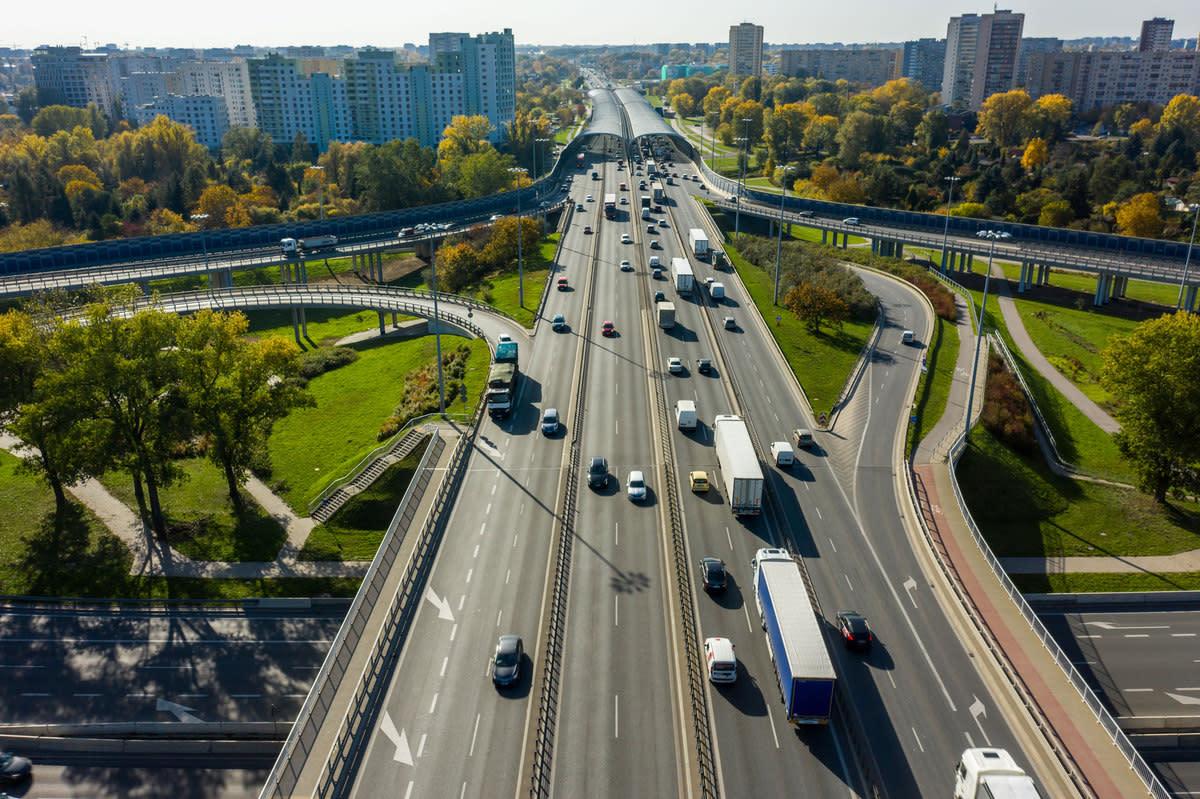Bridging Sectors: The Changing EV Environment with Carl Bayliss
We recently sat down with Carl Bayliss – Vice President of Mobility and Home Energy at Centrica – to discuss the intersection between energy and mobility. We discussed where and how the sectors are converging; areas where they’re moving apart; domestic consumption and changes to distribution and the grid. Here are our edited highlights.

Centrica’s recent partnership with Lotus revealed that the Electric Vehicle (EV) challenge is twofold — there's getting EVs on the market and creating a post-purchase service that supports the customer's energy ecosystem. Could you expand on this idea of a wider ecosystem?
In the partnership with Lotus, we started by asking ‘what's the opportunity between the car and the energy supplier?’ There’s a conception that the OEMs (Original Equipment Manufacturers) and energy suppliers are the ones driving the changes and solutions in the grey space between them but in reality, it’s now being driven by customer behaviour. They are the ones starting to ask what the interplay between energy and mobility is and ‘how does my EV and energy provider connect to provide a seamless experience?’
As two companies, we viewed the problem from the customers perspective, worked through the solutions, and we found that multiple digital reference points are being used to navigate this grey space and the new world of EVs for customers — whether it’s looking for a charging point or which vehicle is best for your lifestyle, customers have better adjusted themselves to the EV world through their smartphones than, say, car dealerships.
Another reason why we are predicting an environment (rather than an ecosystem) for the future EV platform is because the traditional idea of energy suppliers as single service monoliths is rapidly changing. In part, because they are searching for new streams of revenue and so are diversifying their products, bringing added value to customers beyond cost per unit of energy, but now also convenience (through products such as Time of Use tariffs) and sustainability credentials, this doesn’t apply just at home. Energy is no longer just the yearly contract for your home.
Looking back at it, what started off a partnership between Lotus, an 80-year-old iconic brand, which is famous for lightweight sports cars and Centrica, a 200-year-old organisation that provides energy solutions, quickly became about this grey area and making us ask ‘Where does the EV journey actually start for a customer?’
And we’re still in that innovative phase of EVs, with only 2.7% of the total sales volume in the UK as BEVs in 2020 (SMMT 2021). So, the current thinking is how do we establish the primary market? Especially post-pandemic as we expect more EVs on the market, more discerning customers (as people move out of their 1st or 2nd gen EVs and want more features and functions), and we’ve all had this new view around sustainability, having appreciated the cleaner air and quieter streets.
So the need to establish an efficient EV environment is becoming crucial.
As Centrica is connected to the evolution EV infrastructure, what are the important needs and challenges for an energy provider and what’s your view around the common issue of load management?
Energy supply and EV charging products are natural partners, but what’s important from a supplier perspective is how can they add value to the customer and bring functionality to what has historically been a ‘dumb’ charging infrastructure, i.e. the interface between high voltage systems and the end product (EVs, scooters, etc). Both issues align with a more fundamental challenge of what if everyone switches to EVs today, could the grid handle it?
The National Grid has modelled that it’ll only impact the total load by a small percentage which sounds sufficient but doesn’t tackle the issue of how they would manage the peaks. It’s those peaks that are unsustainable and cause concerns. The TV Pickup phenomenon (when a large group of people have synchronised use of electric devices, on average a 200-400 megawatt demand) requires an independent set of resources to manage, the impact could be exponential if as many people come home and charge their electric cars at 7 pm.
A solution currently used is Time of Use tariffs — it promotes customers to charge their vehicles at low traffic or high energy production hours (timed with when renewable production is at its peak). But the common complaint is that energy suppliers are entrusted to assure that their customers’ car is charged whenever they need it, not to be confined to when’s best for the grid or reduced carbon intensity. To have a better customer experience it has to be the customer’s choice and the supplier supports it, regardless if the result is cost-related or eco-focused. This goes back to the need for a well-managed environment for energy. Those are where the opportunities for suppliers to add value to the customer and minimise the infrastructure cost. It’s a solution focussed on better management, rather than new development. That’s why a smart charging infrastructure is going to be important.
As a footnote though, when we think about the infrastructure already built that can be utilised by EVs, the majority is ‘dumb’ and needs a serious overhaul to provide an intelligent and fit for purpose network. The risk is obsolete and stranded assets give a terrible customer experience at best, and compromise safety at worst. An idustry report that came out recently said that in the UK market we will need 5 times the number of chargers than we currently have to reach 2035 EV predictions. So the opportunity is here today to build a smart & integrated network.
It’s often stated that EVs are just consumption devices to the network. Do you agree or do you see EVs as a storage device or even a contributive machine?
In my opinion, EVs are virtual power plants. Fundamentally, they are batteries on wheels. Two recent protocols that expand EVs beyond just energy consumption are the Vehicle to Home (V2H) model and the Vehicle to Grid (V2G) model. We’ve seen in Japan, for example, EVs with bi-directional ports are used as emergency electric “generators” (related article). The same tech can be used to offset home energy use, so you could minimise your carbon footprint and energy bill, by using your car battery to supplement your energy demand. The latter V2G model allows the battery to interact with the grid, helping to smooth the peaks of demand and utilise the availability in the troughs for a financial reward.
The traditional view of vehicles as just transportation can be radically changed when they also function as an arbitrage for energy. Suddenly the total cost of ownership goes down because it’s reducing your overall operating cost and can generate revenue.
In fact, for fleet owners this becomes more imperative and builds a better case for EV adoption as they could use their fleet to contribute to the grid and lower their total ownership cost, that’s something a traditional internal combustion engine (ICE) fleet cannot offer.
Though there have been positive use cases for the Vehicle to Home and Vehicle to Grid models, but adoption has been slow. What do you see as the major challenges with today’s bidirectional networks?
The main hurdle is product. Currently, there is only one protocol which is from CHAdeMo, primarily a fast charging method for BEVs. Therefore, V2G is still in its infancy. Mainstream European EVs use Combined Charging Systems (CCS) which have yet to have bidirectional capabilities. But once that’s realised, it will be a tipping point.
Currently, bidirectional charging is far more expensive for manufacturers than one way or smart charging. Once we have more adoption the economy of scale will bring down the cost and further promote the benefits.
In the past, you’ve mentioned the need to further educate and communicate. What do you feel are some holes in the data?
When it comes to education around EVs, there are still a lot of misconceptions in the discourse — such as if everyone went electric, it’ll bring the grid down or would I get electrocuted if I go to a car wash? (I’ve seriously heard that before). This all stems from the lack of a foundational level of understanding around EV. Surprisingly, there’s still a lot of sensationalised news used against EVs like videos of battery car fires, but those don’t put into perspective how many more ICE vehicles burst into flames every day (1,898 petrol and diesel fires compared to 54 electric vehicles in 2019, London Fire Brigade). Another, which is very common, is range anxiety with EVs, yet around 3000 ICEs are recovered because they ran out of fuel en-route every day in the UK. There’s still a huge perceptive change to be had around EVs.
The contradiction is that we know there are a ton of tangible advantages of EVs but it just isn’t being communicated effectively to the customer — both on a domestic or fleet level. The education and trusted source of information are some of the key pieces of work with the Lotus partnership.
On the data side, I believe 5G and the adoption of IoTs (Internet of Things)will be a big influence, especially for the EV network, because vehicle to vehicle (V2V) and V2G communication is going to be a seamless transition with electric cars compared to ICEs. That’s where the EV ‘trinity’ comes into play — with Zero emissions, Zero congestion and Zero collisions (through V2V communication & ADAS systems) EVs could supersede ICEs dramatically.
If OEMs, energy suppliers and chargers were more collaborative we could better predict the car type, its capacity and needs then we can more effectively manage load, both to benefit the grid and the customer. Around each of those factors comes the need for transparency of data in the EV environment. Ultimately, breaking down the silos of data, networks and organisations will help adoption scale faster and the supporting mobility system be more resilient.
As there are still many opportunities for change in the EV environment, how should OEMs maintain future thinking when manufacturing?
As energy and automotive are progressively working closer, I think OEMs should expand on the idea of connectivity to the wider EV environment. There’s still a reluctance there, I believe mainly due to prioritisation, battery research and development comes first for OEMs.
But from a supplier view, it’s important to maintain a resilient network, ensuring supply capabilities, provide a cost-efficient energy transaction and also giving the customer greater benefits.
If communication between the two becomes more open, then the OEM can bring new products to market while the supplier supports the customer needs, but until then, cost and innovation will continue to be an issue. Ultimately this is worse for the customer because there will always be friction that comes with ownership, such as having to learn about charging options rather than the straightforward A to B option they know from ICEs.
The solution for all players, from OEM to supplier, is to work collaboratively to build a seamless EV environment for the customer.
That concludes our interview with Carl Bayliss. We'll be covering more about the bridging sectors on our blog page, so stay tuned! You can also read all about the energy and mobility sector on our Insight pages.
 Matthew EdwardsManaging Director, UK
Matthew EdwardsManaging Director, UK





